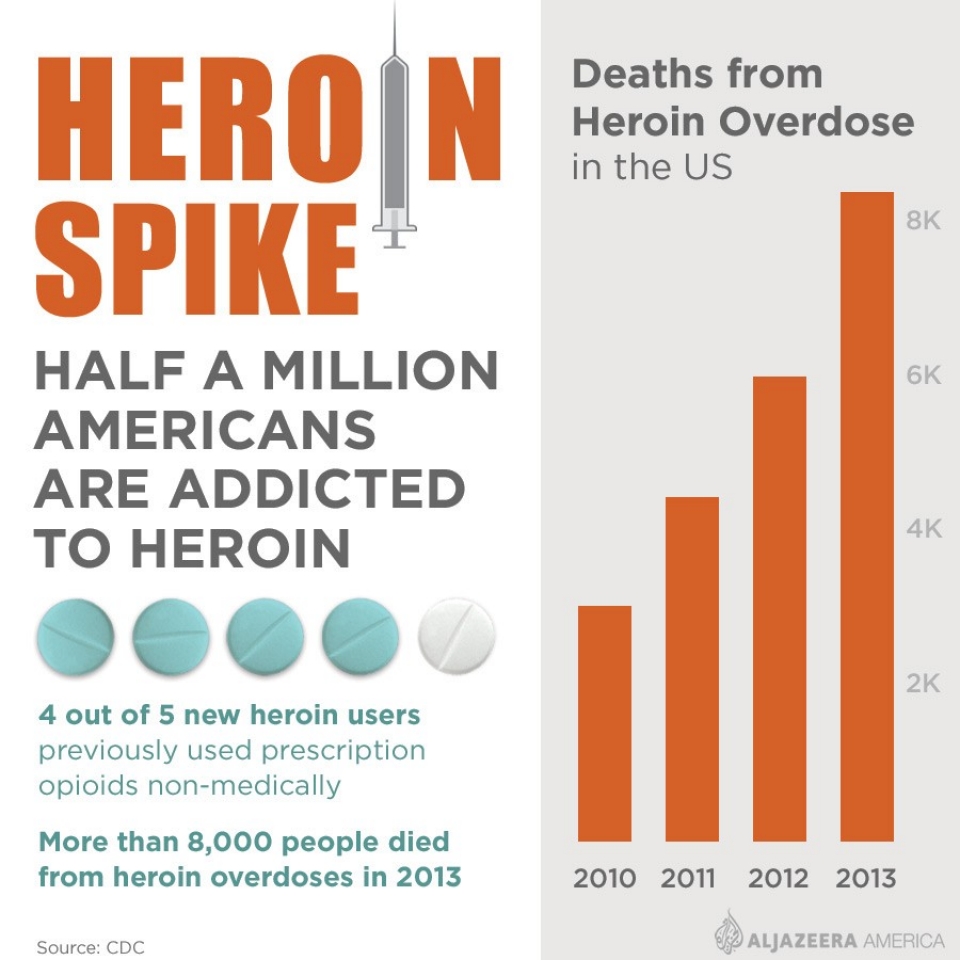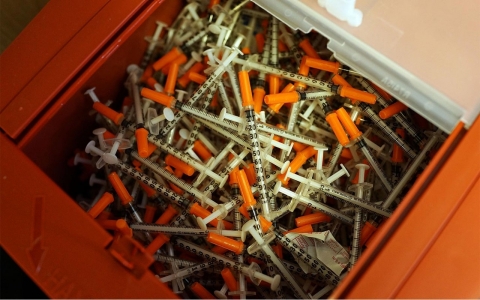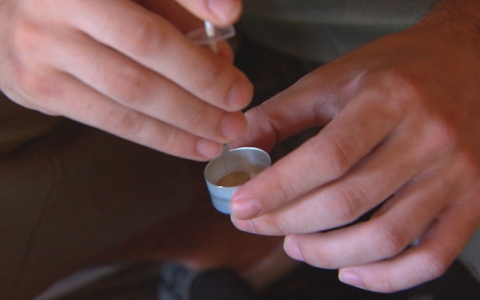The three young white female friends sat nonchalantly on a table at the Kenton County Detention Center, wearing prison garb and with a prevailing air of hopelessness.
Similar to many jails where 75 percent of the people have been locked up for crimes related to drug addiction, each rattled off the consequences of her heroin habit, naming the worst aspects of a struggle to beat a soul-crushing addiction.
“I prostituted my body and slept with anybody, anything to get what I needed to get high,” said Mary Woodward, candidly acknowledging the extent of her problem, as Kristian Cristello looked on.
“I would literally beg, borrow, and steal just get the money, manipulating people that I cared about … just to get the money to feed my addiction,” said the third inmate, Krystle Lightner. “I regret choosing heroin over my children. The hardest thing to deal with, to go to sleep at night knowing that. That’s not natural, it’s not right.”
From 2002 to 2013, heroin dependence and abuse in the United States increased 90 percent, according to a report released by the Centers for Disease Control (CDC) in July. The rate of fatal overdoses quadrupled since 2000. Moreover, the number of Americans who said they’d used the drug in the last year went up by 65 percent; that means more than half a million people in the U.S. take heroin.
Notably, heroin use has been climbing among all demographic groups, including women, non-Hispanic whites, and the more affluent. Still, the growth in addiction has been most pronounced among white males between 18 and 25 years old.
Some of the areas worst hit are in Appalachia, the Midwest and New England, with a particularly acute 500-percent increase in overdoses in Kentucky.
“Most people, when they think of heroin, think of inner-city communities. They think of the heroin epidemic that hit the country in the 1970’s and affected people who were poor and not white,” said Andrew Kolodny, chief medical officer at Phoenix House, a nonprofit treatment organization.
“The heroin crisis we’re dealing with today is affecting suburbs and rural areas. It’s much more severe,” he added. “The worst drug epidemic in United States history.”
A massive surge in consumption of prescription painkillers took place between 1999 and 2010, as pharmaceutical sales for a wide range of synthetic opiates quadrupled.
Four out of five heroin addicts were previously hooked on another opioid substance. Prescription painkiller addicts are 40 times more likely than the general population to become addicted to heroin.
On the one hand, American doctors write over 250 million legal painkiller prescriptions per year, while the illegal heroin industry is said to be worth $27 billion nationally.
“A $10 bag of heroin will do exactly what a $30 pill of oxycodone would do,” Kolodny said. “And it’s in white households that you’re more likely to find painkillers in the medicine chest.”
Meanwhile, the potential for heroin abuse by ever-younger Americans seems to be rising, with the August approval by the Federal Drug Administration of OxyContin use among 11 to 16 year-olds.

With some users, like Sarah Kordenbrock in Covington, Kentucky, the habit began with use on the weekends, then during the day, and then every day. Kordenbrock’s struggle to finance her addiction began to ruin her family life.
“It turned me into a liar, a thief,” she said, describing a situation that led to her parents spending $77,000 on drug rehabilitation and to buy back the possessions that their daughter had sold off.
After abortive attempts at residential treatment, brushes with death, and intervention from law enforcement, Kordenbrock’s father, Greg, decided he’d seen enough.
“I turned 52 and worked 30 years for a company. I have a pension, retirement, and could have walked out of there,” he said. “But we liquidated to pay for this, to save her life.”
Sarah soon spent many weeks at the Kenton County jail suffering from withdrawal. “I called and would cry and beg them to come and get me,” Kordenbrock said. Even after going cold turkey, an estimated 60 percent of recovering addicts eventually relapse, according to the National Institute on Drug Abuse.
Covington Fire Department Chief Dan Matthew leads a squad that deals with up to 10 heroin overdoses per week, often several in the same house, in a Cincinnati suburb of some 40,000 people.
“You find the patients there, usually not breathing,” Matthew said. “We put an airway in them, prepare an IV, give them Narcan” [a brand name for anti-overdose drug naloxone] to revive them.
Andrew Kolodny
chief medical officer, Phoenix House
In its recent report, the CDC recommended that states do more to address painkiller addiction, increase access to treatment services, offer treatment for administering naloxone, and provide clean needles to users.
But many drug experts say the White House’s follow-up announcement in August fell short of expectations, with the Office of National Drug Control Policy committing just $2.5 million per year for a new federal program to track heroin use.
In Baltimore, city officials have floated plans for 24-hour overdose clinics, as Maryland state law enforcement increasingly trains personnel on how to administer naloxone nasally “off-label” — 1 milligram per nostril — rather than by injection.
But the price of the “miracle” substance, which takes around 45 seconds to work, has been soaring — a lack of affordability described by senators as a “public health concern.” Mobile treatment clinics have been another new approach to solving the growing problem, which is leaving causing grave damage across America.
In Mainville, Ohio, Olivia DeLand has prostituted herself for drugs, and caught the liver disease hepatitis C. She said she’s become “numb to emotion, hard to laugh and impossible to cry.”
“My mom is destroyed as a person, I’ve just killed her,” DeLand added. “You do the drugs, you do things that are bad, and you feel bad for doing the things you do for drugs.”
“And that makes you want to use drugs even more to cover up that pain, so it’s just a vicious cycle of … over and over and over again.”


Drug treatment advocates caution new program appears to prioritize law enforcement over medical treatment

Jim Hooley has the story of a recovering addict who is turning her life around after being a heavy heroin user

Baltimore's health commissioner wants everyone in the city to be trained to respond to a heroin overdose

Carol Rostucher patrols the most troubled parts of Philadelphia, giving food, hugs and hope to addicts

Some doctors in Canada are using an unusual method to help maintain addicts’ health, but not everyone sees the benefit

Author Sam Quinones discusses his new book, which traces heroin's path from Mexico into the American heartland






Error
Sorry, your comment was not saved due to a technical problem. Please try again later or using a different browser.